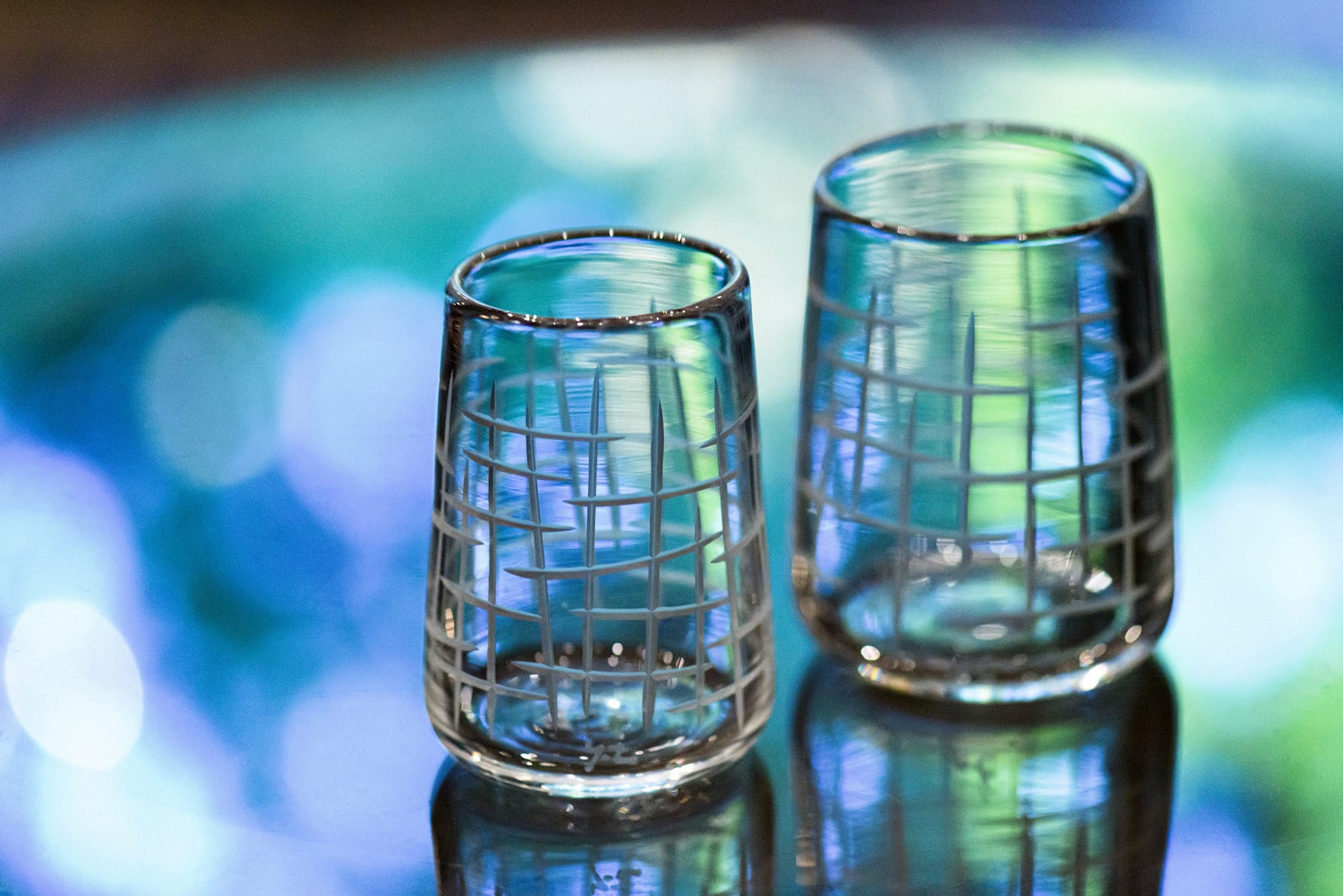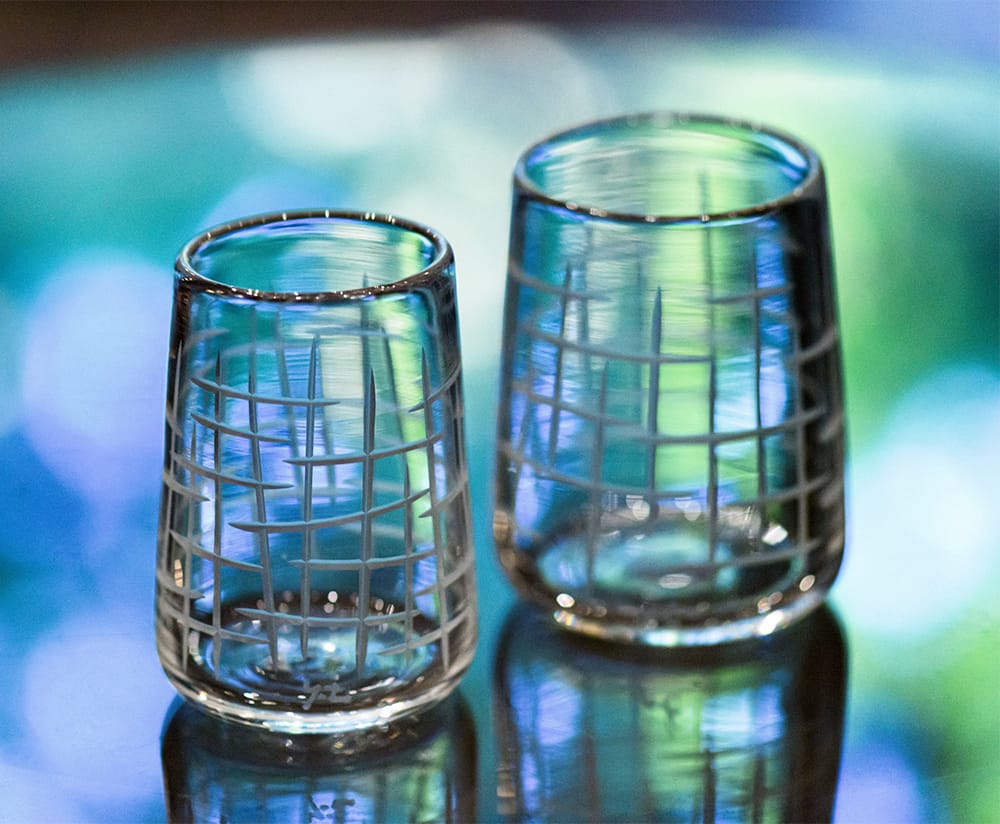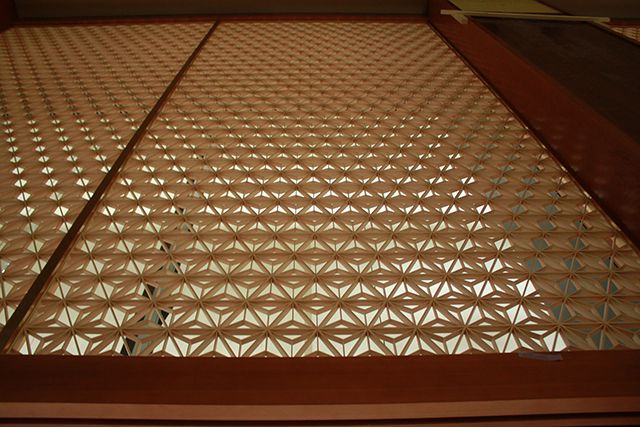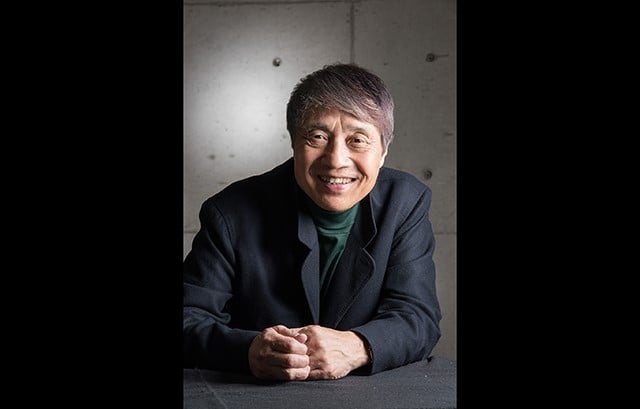From the IT Business to Introducing Japanese Art
Dasha Klyachko
Do you know the online-gallery “Japanese Glass”? You may not have heard of it and that’s understandable. The website introduces the Japanese glass and the artists. However, it isn’t well known in Japan. In fact, “Japanese Glass” does not target the Japanese audience.
Dasha Klyachko is originally from Russia but she left her homeland and moved to America 30 years ago. She is an entrepreneur who worked in the IT business and presently lives in the U.K.. Several years ago, Dasha discovered Japanese glass and now she passionately wants to introduce it to the Western audience, fuelling the creation of the on-line gallery “Japanese Glass”.
In her late teens, Dasha became interested in Japanese culture, being intrigued by the films by Akira Kurosawa. She was fascinated with the vastly different sense of beauty and the culture.
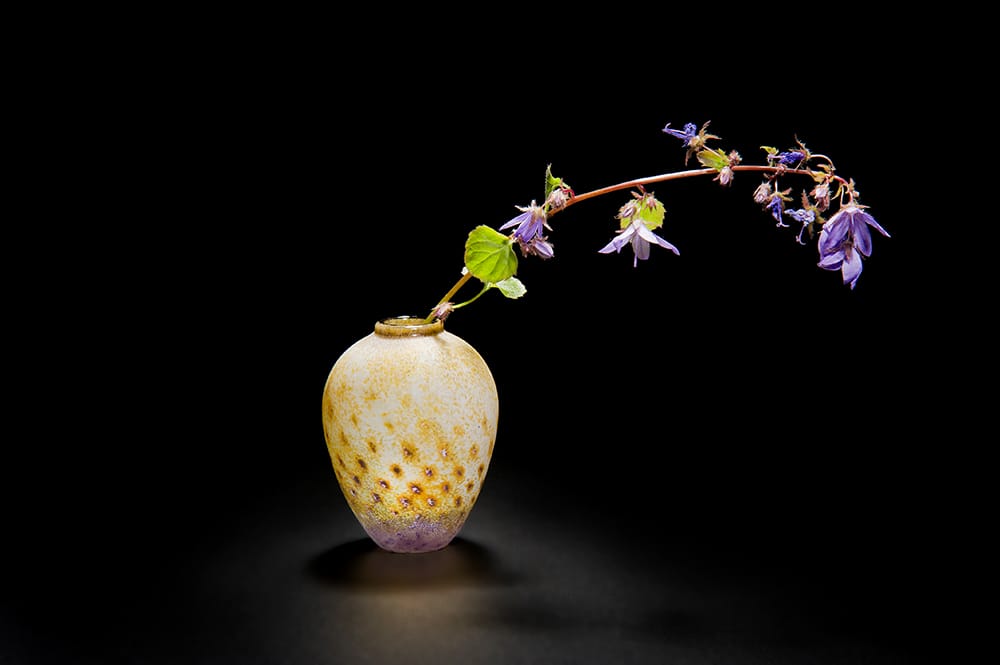

Flower vase by Nomichi Hashimura. Nomichi’s little vase, accompanied by tiny wildflowers, creates a little Zen moment in your room. Photography by Japanese Glass
Since her first visit to Japan about several years ago, Dasha has had the opportunity to witness many different types of Japanese craftsmanship. One day, in a small gallery near the Philosopher’s Path in Kyoto, her eyes were glued to a poster of a past exhibition., which featured a photo of glass art pieces. It was the first time that the art item directly appealed to her heart.
Overcoming the Language Barrier, Launches the Online Gallery “Japanese Glass”
Back in the U.K., she researched about Japanese glass on the Internet, however, most of the websites were in Japanese and the language barrier prevented her from getting information.
“I want to know more about Japanese glass art and introduce the attraction of it to the West.” This idea became strong in her mind. Fortunately, she met Kazuyo Yasuda, a journalist and editor who lived in London for 25 years. With her wide support in research, translation and interpretation, “Japanese Glass” began to take shape and develop.
“Japanese Glass” directly contacts the glass artists in Japan and introduces their profile and photos of their work to western viewers, facilitating more sales. Toyama Glass Studio, in Toyama city in Toyama Prefecture, known as a center of the modern Japanese glass art, has been very supportive.
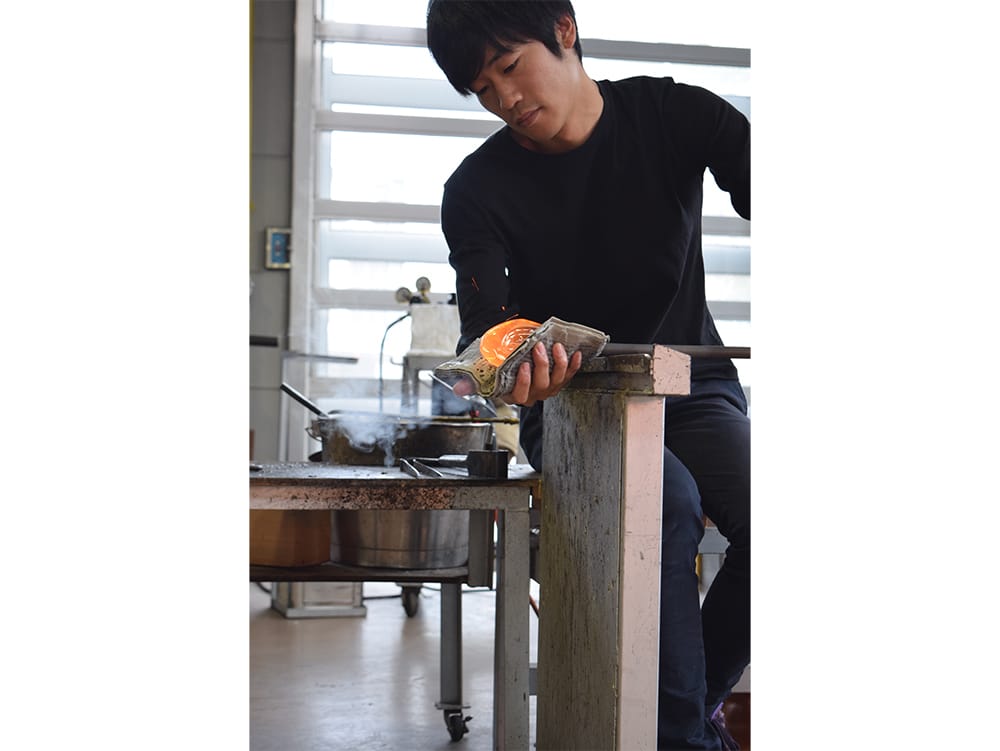

Takeyoshi Mitsui is from Hiroshima. He lives and works in Toyama as an independent glass artist after having worked for Toyama Glass Studio. Photography by Japanese Glass
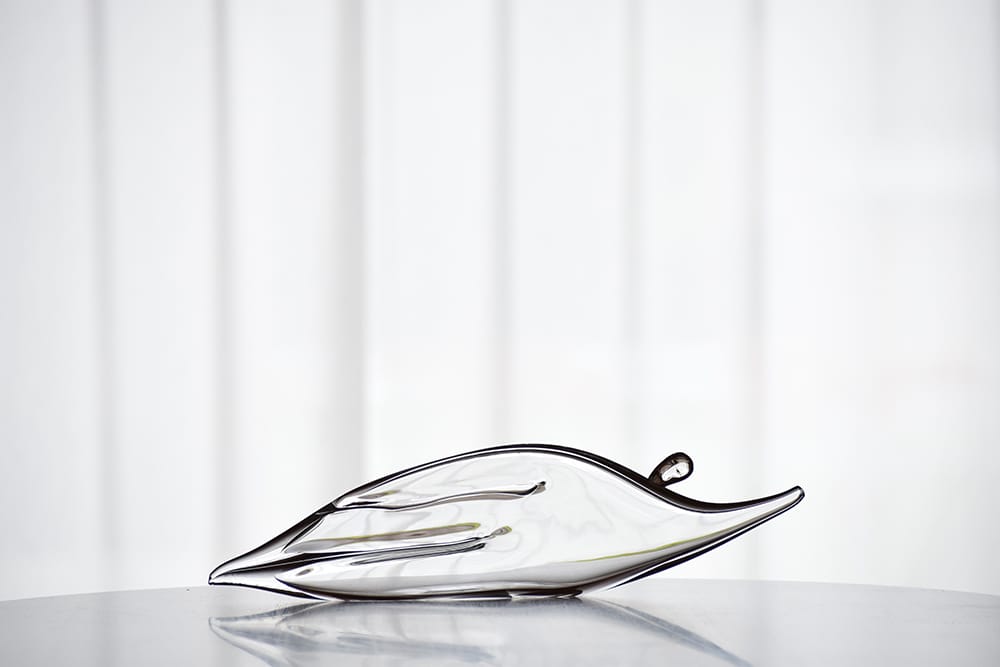

“Floating Man”, a glass sculpture by Takeyoshi Mitsui who expresses softness and delicate nature by using hard glass. Photography by Takeyoshi Mitsui
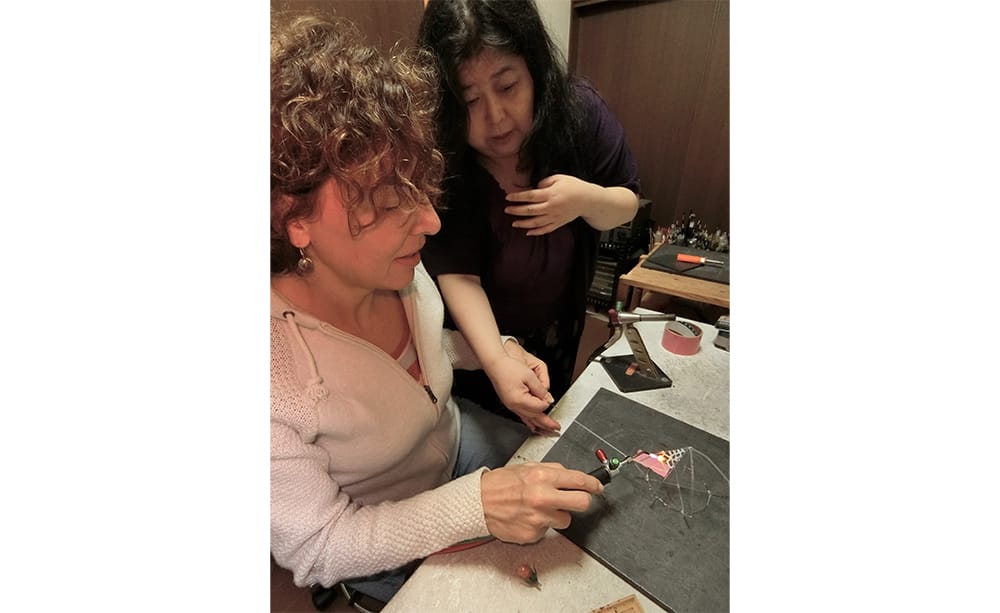

Dasha experiencing the lamp work at Yuko Asakura’s glass studio in Kanagawa. Photography by Japanese Glass
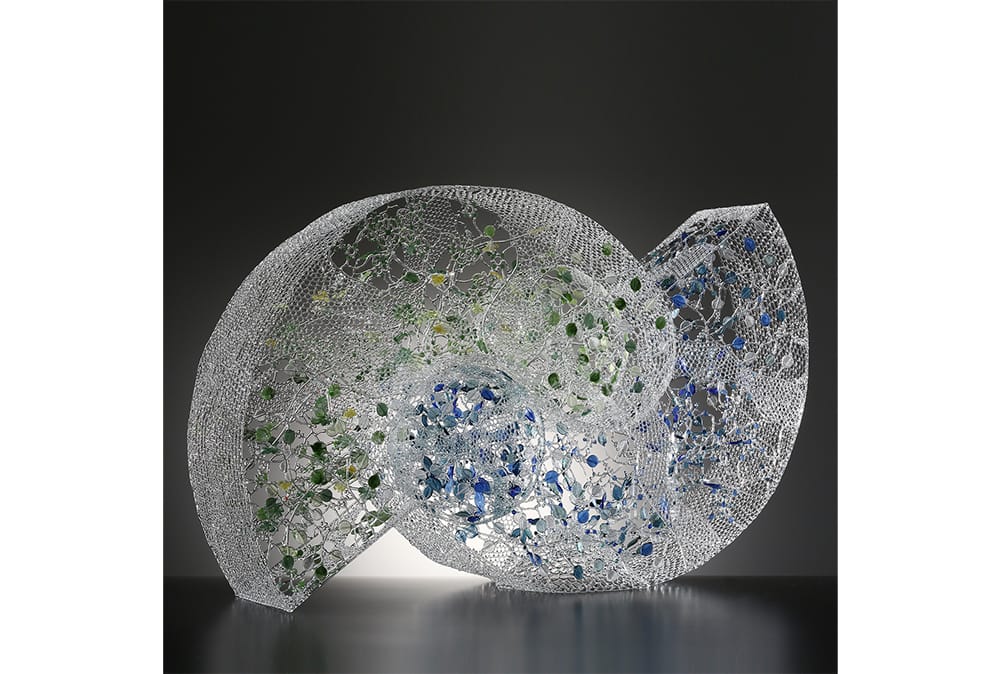

Art Piece “Harmony” by Yuko Asakura won the JGAA Award at “Glass ’18 in Japan” held by the Japan Glass Artcrafts Association. Photography by Minoru Fukuda
Attraction of Japanese Glass Art that Grabbed Dasha’s Heart
Dasha told us about the attraction of Japanese glass art. “Japanese glass art takes inspiration from nature, values quality of the raw material and respects imperfection and favoring asymmetry. I am drawn to their minimalism too.” You will find such pieces in the collection of “Japanese Glass”.
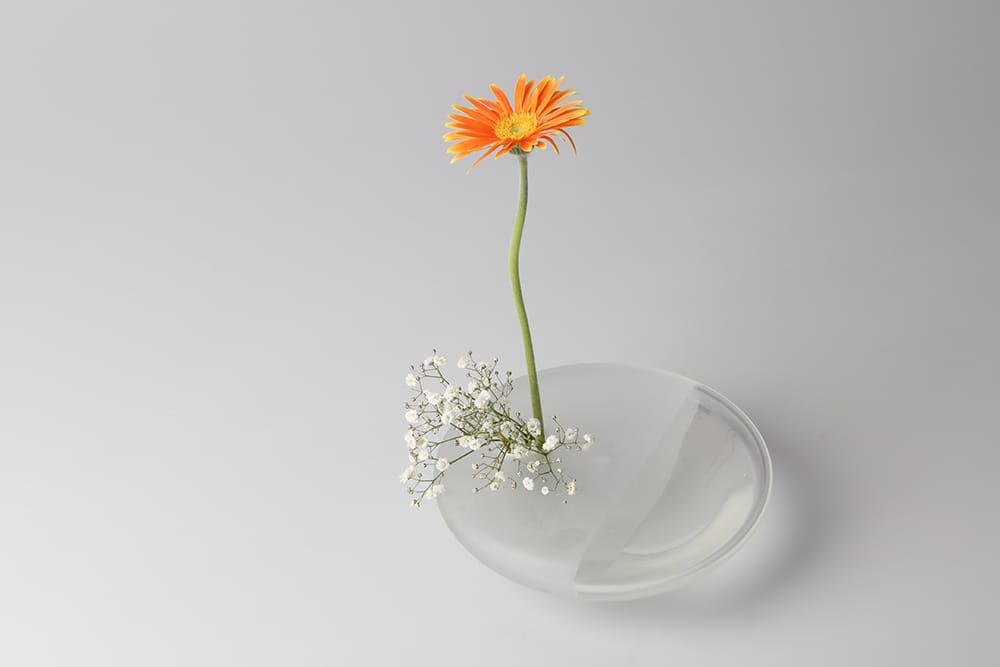

Flower vase “Sound of Waves ‐Clear‐” by Miya Kitamura. Kitamura created this piece imagining that “I listen carefully in a field with flowers and hear the sound of water flowing.” Photography by Miya Kitamura
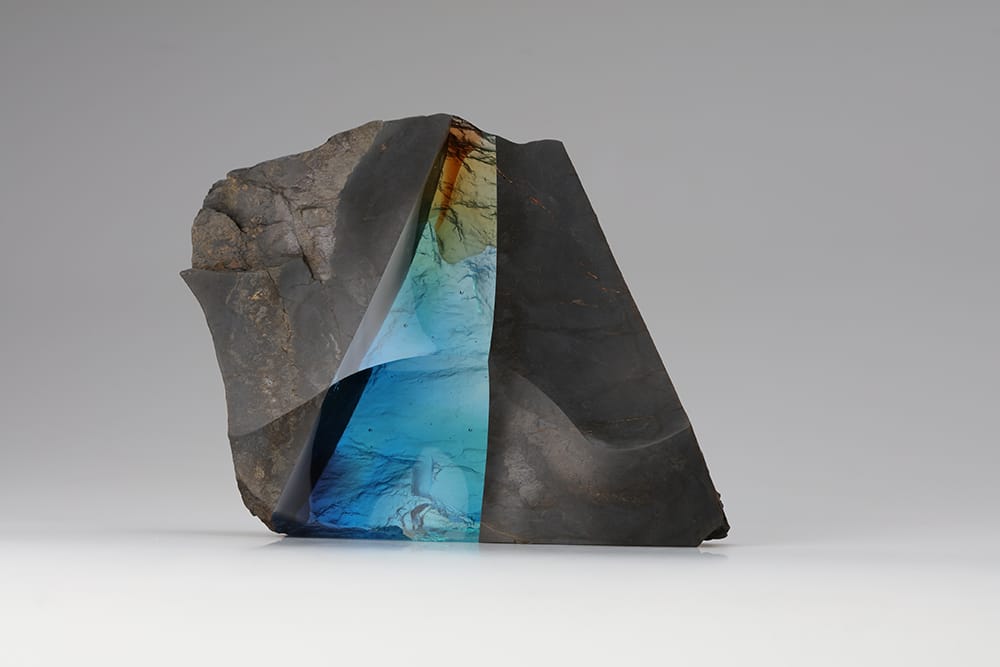

Art object “Symbiosis #17” by Suguru Iwasaka. Combining a rock, a piece of nature, with a glass, a man-made creation, allowing the two to co-exist together in a new form. Photography by Suguru Iwasaka
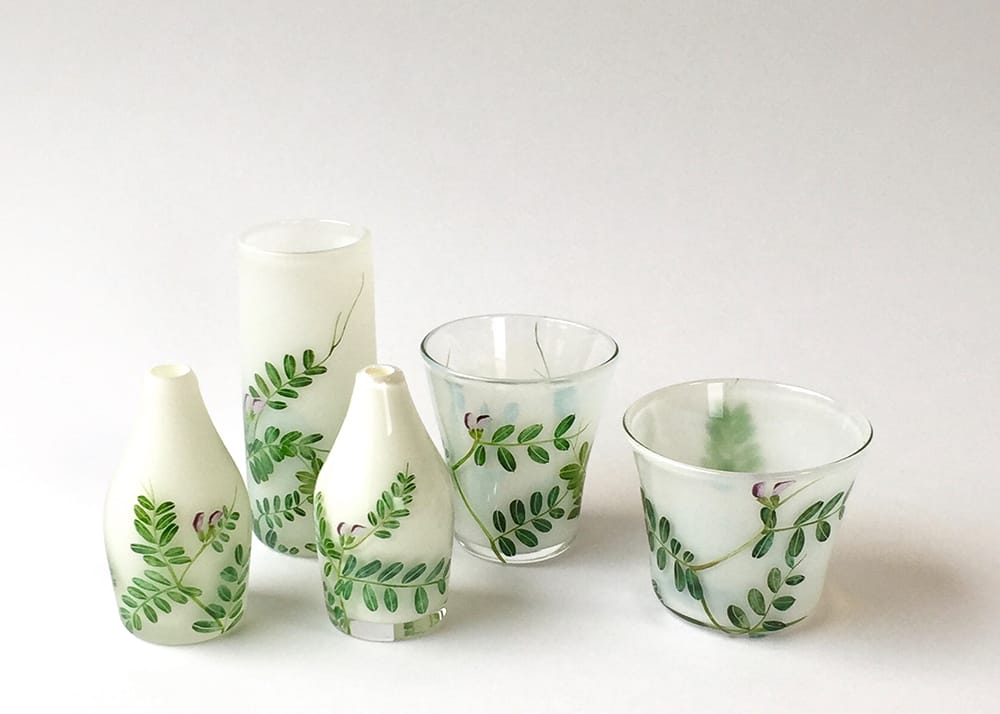

“Karasunoendo (Vicia sativa)” by Yo Yamazaki. On blown glass, Yamazaki paints nature which she finds on her door steps. Photography by Yo Yamazaki
Glass Art for Your Daily Life
“Japanese glass art pieces are utilitarian objects. I am attracted to that”. As her words imply, Japanese glass art pieces are part of her daily life.
“My small vase for a flower, my tea cup and my soy saucer are all Japanese glass art. I look at them every day and find pleasure in their beauty. I want my daily life to contain fewer material items, but the ones that I have must be special: beautiful, hand-made and unique.
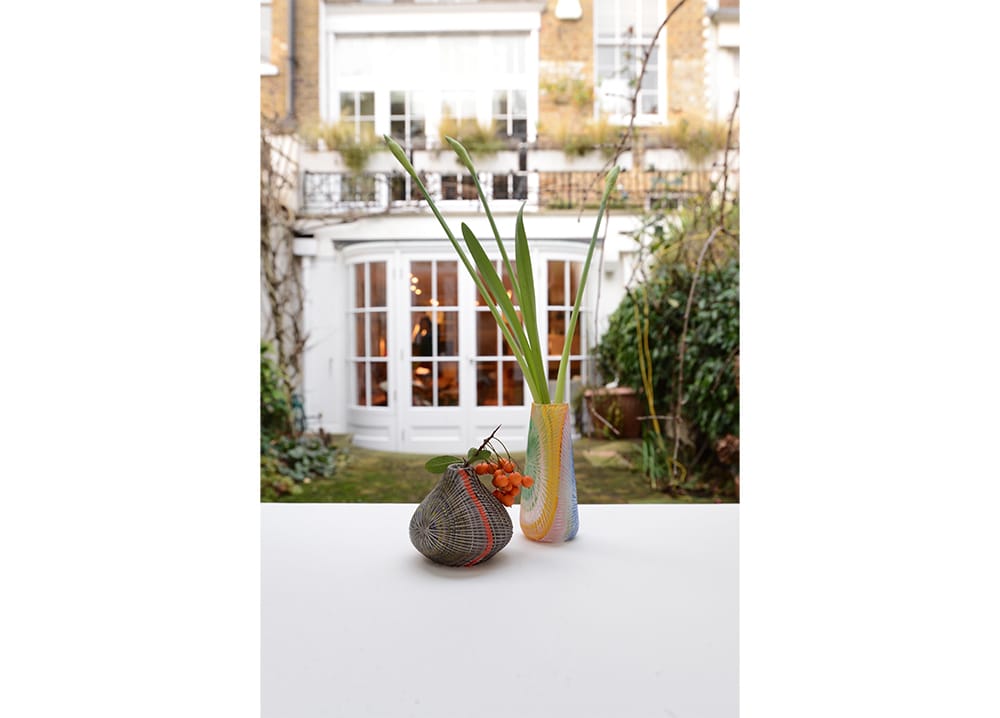

Lifestyle to enjoy art at home. Flower vases “Ori (Woven)” by Youko Sano with surrounding flowers. Sano moved to Toyama and works with her husband at their glass studio. Photography by Japanese Glass
“Japanese Glass” has a wide collection, ranging from affordable small pieces to elaborate art objects. “I hope young people in particular become familiar with Japanese glass art. It can be incorporated into their everyday life light-heartedly”, says Dasha.Another Japanese art form is now being introduced to the world through a window that Dasha has created.
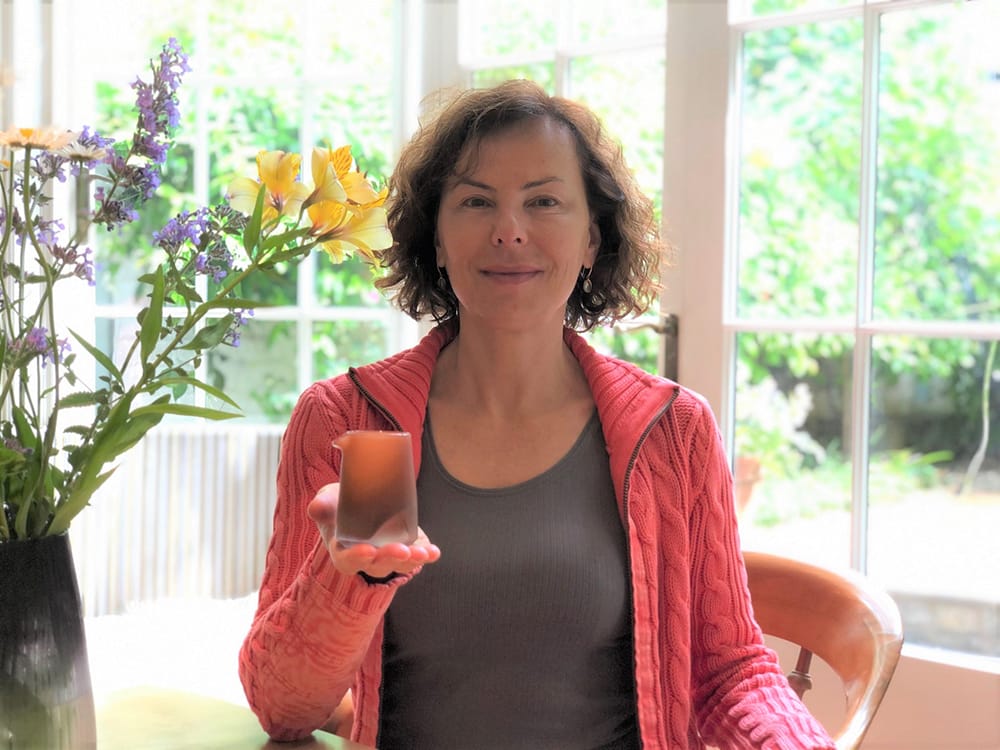

Dasha with one of her favorite Japanese glass pieces at home. A pitcher “Pezzo” by Miya Kitamura means “piece” in Italian. Kitamura adds a small mass of glass to her piece, which gathers and reflects light in transparency. Photography by Japanese Glass
